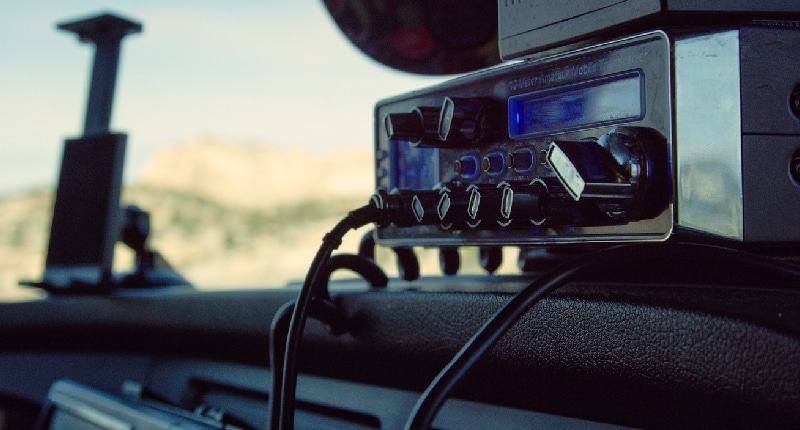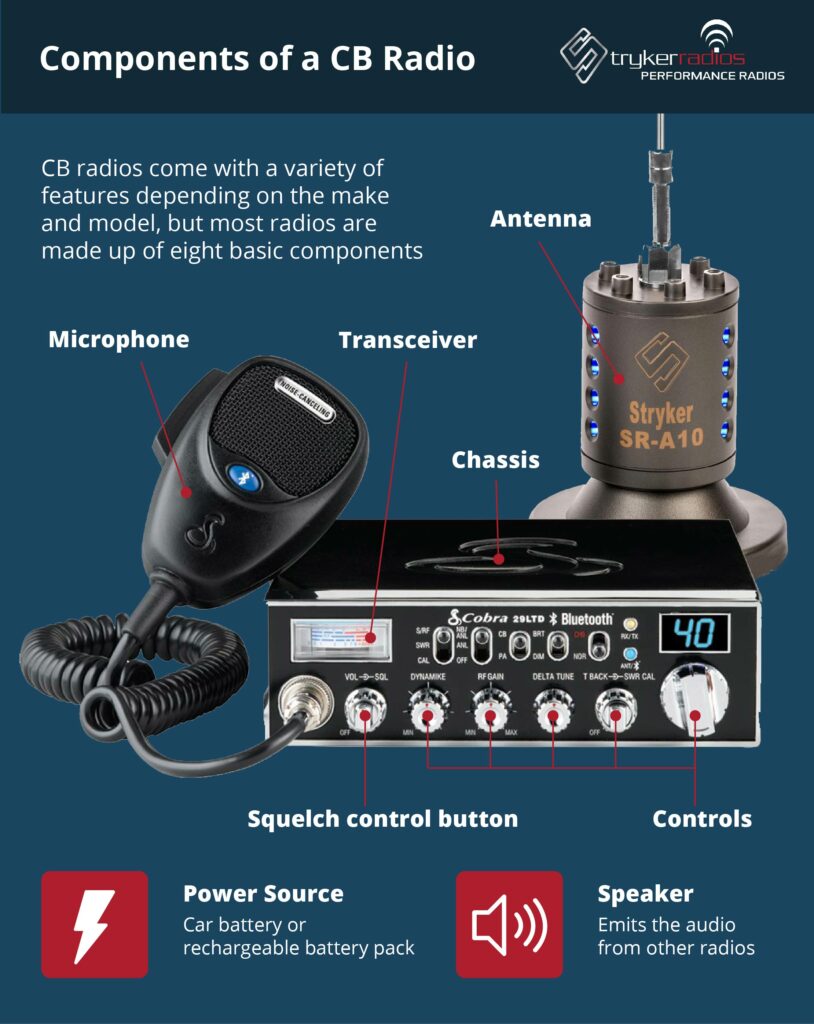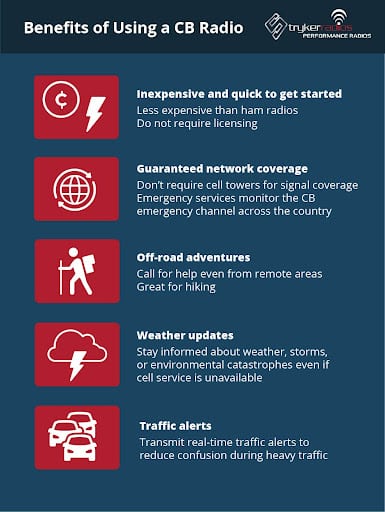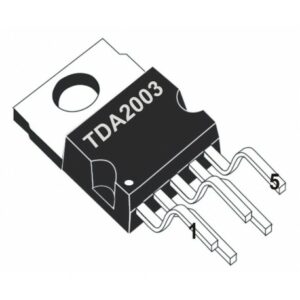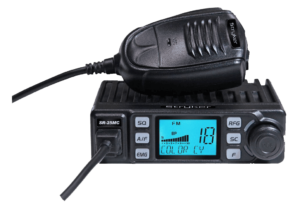CB radio service, (or Citizen’s Band radio) is a public, two-way radio service that operates on forty channels. Short-distance CB radios allow users to communicate across a range of up to ten miles, either from permanent base stations or via handheld transceivers. They are different from ham radios, which require an FCC license. CB radios are especially popular with truckers, motorcyclists, amateur radio operators, and people in remote areas where cell phone service is unreliable. Because no license is required, anyone can own and use a CB radio.
If you are new to CB radios this beginner’s guide is a great place to start. You’ll find everything you need to know in the following sections:
A Brief History Of CB Radios
The CB radio was originally created to help troops communicate during World War II. Today the military uses SSB (Single Sideband) radio communication instead. After the war, inventor Al Gross established the Citizens Radio Corporation to manufacture handheld radios for the general public, and citizen radio services quickly became popular with farmers. By 1958, the FCC was convinced to establish Class D public radio service at 27 MHz; this AM band eventually became what we know today as “Citizens Band” and gave CB radio service its name.
High oil prices in the 1970s made CB radios extremely popular with truckers as they instantly shared information about the best fuel prices, traffic conditions, and speed traps. While the original Class D CB radio had 23 channels, by 1977 there were 40 CB radio channels in the U.S., a figure that remains today. Users can transmit on any channel except Channel 9 which is limited to emergency communication.
The use of CB radios declined in the 1980s with the advent of cellular phones, but these mobile radios still have a dedicated following for recreational and emergency use by:
- Truck drivers
- RV owners
- Motorcyclists
- Hunters and Fishers
- Hikers
- Preppers and Survivalists
- Off-Roaders
- Farm pickups
- People in remote or storm-prone areas
In 2021, the FCC updated its rules to allow the use of FM frequencies that can provide clearer communications for CB radio users.
The Components Of A CB Radio
CB radios come with a variety of features depending on the make and model, but most radios are made up of eight basic components:
- Microphone: Used for transmitting audio to other CB radios
- Transceiver: The electronic device that both sends and receives the radio signals
- Squelch Control Button: Filters out background noise
- Antenna: Transmits and receives radio signals
- Speaker: Emits the audio received from other CB radios
- Power Source: Runs off a car battery or a rechargeable battery pack
- Chassis: Houses the electronic components of the CB radio
- Controls: Used to adjust volume, select channels, and transmit or receive audio
Some CB radio models also include an SWR meter to make calibrating and adjusting the antenna easier.
How Do CB Radios Actually Work?
A CB radio serves as both a transmitter for sending messages and a receiver for receiving notifications, so it is actually a transceiver.
The operation of a CB radio is centered on the radio antenna because the antenna sends and receives the signal being sent by your CB radio unit. The radio antenna holds two basic functions:
1) It captures radio-frequency signals (radio waves) and converts them to electrical signals (the voices we hear on incoming transmissions).
2) It converts electrical radio signals from the transmitter into radio-frequency signals (turning voices into radio waves for an outgoing transmission).
Tuning the antenna is crucial because the antenna length must precisely match the wavelength of the transmitted radio frequency for transmissions to be sent effectively.
The quality of both the signal received and the audio transmitted is largely determined by the antenna. Calibrating the CB antenna with a standing wave ratio (SWR) meter is an essential step. Because mountains and buildings can interfere with CB radio signals, the highest quality transmissions are between radio stations that have a clear line of sight.
CB radios operate only at a specific frequency, so there are a limited number of channels on which to broadcast. In the United States, there are 40 CB channels, and operators can broadcast on any channel they wish. The only exception is Channel 9, which is limited to emergency communication.
Because of the way a CB radio works, only one speaker can broadcast on a channel at a time. And even though CB radio is completely anonymous, broadcasts on your CB radio station will not be private, and anyone tuned into that channel can hear you.
Types Of CB Radios
As you shop for a CB radio you will find four different types: mobile CBs for vehicles, all-in-handset radios, walkie-talkie style CBs, and CB radio base stations. The base station is not portable, but all of the other types may be used in a vehicle. Each type of CB radio has pros and cons to consider. Since the features of CB radios vary by model, it may take some research to find the best one for you. Look for the features you want and shop in the price range you are willing to pay.
Mobile CB Radio
A mobile CB radio is the most popular model. Typically installed on or under your vehicle’s dashboard or even on the floor, mobile CB radios come in several sizes and have various features. Before buying one, make sure you have room to mount it without interfering with your vehicle’s legroom.
Handheld CB Radio
Handheld CB radios are also known as walkie-talkies; they’re designed for traveling on foot but their small size also makes them convenient for use on motorcycles and bicycles. They are battery-powered and usually have a cigarette-lighter cord for vehicle use. Some models have rechargeable battery packs or incorporate rechargeable AA batteries. Handheld CB radios can be converted for use in vehicles by connecting a magnetic or fixed-mount CB antenna; simply remove the radio’s rubber antenna and attach an adapter for the car-mounted antenna.
Base Station CB Radio
Base station radios are designed for indoor use in a permanent location, and they plug into a wall outlet. With all components incorporated into a single unit, they provide a clean footprint. Mount the base station antenna up high and connect it with high-quality coax cable for the best performance.
All-In-Handset CB Radio
All-In-Handset CB radios are designed with the controls built into the handset to allow one-hand control. Because the controls are in the handset, these units have a larger microphone. All-In-Handset CB radios are ergonomically designed; their compact size and easy installation make them a good choice for smaller vehicles.
CB Radio Rules & Regulations
In the early days of CB radio, operators were required to obtain a license and official call sign, but these are not required today. CB radios have become a simple and affordable means of communication.
Is a license required to operate a CB radio?
A license is not required to operate a CB radio, and the FCC does not renew formerly issued CB Radio Service licenses.
According to the FCC, anyone, regardless of age, can operate a CB radio station for personal or business use. The only exceptions are a foreign government, a representative of a foreign government, a federal government agency, or someone who has received an FCC cease-and-desist order that is still in effect.
CB Usage & Range Limits
CB service operates on a “take-turns” basis, meaning no CB channel is assigned to any specific individual or organization. Users may not talk with another station for more than five minutes continuously and must wait at least one minute before starting another communication on the same channel.
CB radios are intended for short-range, local communications only. However, the range can be extended significantly by reflecting or “skipping” the signal off the ionosphere, a method known as “shooting skip.” While some CB users may use this technique to reach thousands of miles, the FCC prohibits any attempt to communicate with CB stations beyond 155.3 miles.
Regulations On CB Radio Equipment
All CB radio equipment used in the United States must be FCC-certified and labeled as such by the manufacturer.
The power output of your CB unit cannot be increased, and modifying the unit internally or attaching any type of power amplifier is prohibited. The authorized maximum power levels depend on the type of signal being transmitted – twelve watts Peak Envelope Power (PEP) for single sideband and four watts PEP for AM signals.
The Difference Between CB Radio And Ham Radio
CB radios and ham (amateur) radios are both two-way communication devices, however, ham radios offer a wider range of frequencies, higher power output, and more advanced features. In addition to requiring licensing for operation, ham radios differ in several key ways:
- Frequency: While CB radios operate on 40 channels in the 27 MHz frequency band, ham radios can operate on a wider range of frequencies in the high frequency (HF), very high frequency (VHF), and ultra-high frequency (UHF) bands.
- Power Output: Ham operators are allowed higher power output than CB radios, which are limited to 4 watts of power.
- Purpose: Ham radios are primarily used for hobby radio, emergency communication, and public services, while CB radios are used for personal communication and informational exchange.
- Features: Ham radios typically offer more advanced features such as voice memory, weather alerts, and digital modes, while CB radios tend to be more basic in their functionality.
The Benefits Of Using A CB Radio
Despite being overshadowed by advanced technologies like smartphones, CB radios still offer unique benefits to their users. Some of these include:
- Inexpensive and easy to get started: CB radios are less expensive than ham radios and don’t require licensing. Once you purchase your CB radio and antenna, you have all the equipment you need to get started!
- Guaranteed network coverage: While cell phones rely on cell towers and signal coverage, CB radios can transmit messages from anywhere in the country, providing reliable communication even in remote locations. Volunteers and emergency services typically monitor the official CB emergency channel throughout most of the country.
- Off-road adventures: A CB radio could be a lifesaver in an area without cell service. Even if you don’t experience an emergency, you can monitor CB channels for caution and advice on navigating a specific trail. The ability of hikers, especially when alone, to request help is a significant benefit.
- Weather updates: A CB radio can keep you informed about the weather, storms, environmental catastrophes, and other threats as you follow weather channels.
- Traffic alerts: Truckers utilize CB radios to transmit real-time traffic alerts like accidents, roadwork, gridlock, or law enforcement presence. CB radios allow passing or merging trucks to be informed of safe maneuvering, reducing confusion during heavy traffic.
CB Radios are Alive and Well
CB radio users enjoy the benefits of public airwaves. CB channels have been used by truckers, off-roaders, RV owners, motorcyclists, and hobbyists for decades, keeping these groups organized and safe during events and emergencies. Since cell phones are unreliable in remote areas, CBs have become essential for those who love outdoor activities off the beaten path.
Drivers take advantage of CB radios to help them find an alternate route in a traffic jam, warn them of blocked roads ahead, provide real-time weather reports and severe weather warnings, provide information about police activities, and call for assistance after a mechanical breakdown or medical emergency.
Although new technologies may have undermined the CB radio’s popularity, it still serves a vital purpose today. To get the best performance out of your CB radio, choose a high-quality CB Antenna from Stryker online, or locate a store near you.

